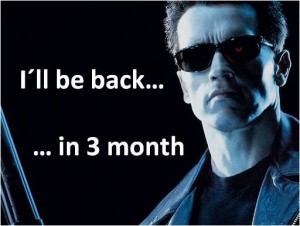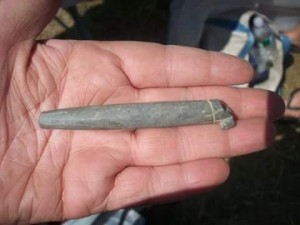Sabbatical. SABBATICAL. Roll that word around in your mouth. SAB.BAT.ICAL. It is the umami word in the academic lexicon. ‘Tenure’ is nice. ‘Promotion’ is lovely. Who doesn’t appreciate job security or a raise? But ‘sabbatical’ is the word that warms the cockles of a true academic’s heart, all the way down to the sub-cockle region. Sabbatical is the brief moment every seven years* when IUP professors get to do the things that led them to become professors in the first place. I love teaching, but I became a professor to do archaeology and to do the archaeology I want (the major distinction between the academy and CRM). During sabbatical I will have the time to do that. This is the closest that professors come to returning to the wonderful time of being a grad student working on thesis/dissertation research – that fleeting instant when you only had one project to hold in your mind and few, if any, outside distractions.
I’m pretty freaking excited about sabbatical.
The list of things I want to get done during my sabbatical is extensive, and I will not complete all of them. That is the nature of archaeology – there are so many important heritage resources and so little time. The two main projects that I want to advance are a maritime archaeology textbook and the Hanna’s Town project.
Jessi Halligan (Florida State University), Alexis Catsambis (Navy History and Heritage Command), and I have been contracted by Oxford University Press to write a maritime archaeology textbook aimed at undergraduates and introductory graduate students. We are still working on a catchy title. Over sabbatical, I will spend several days a week hiding in the library and writing sections of this book. As with any good textbook, the writing will take less time that the research to ensure that the book is based on the most up-to-date information.
I will be traveling to Greensburg on a regular basis to work on the Hanna’s Town project. IUP has been working at Hanna’s Town (the first capital of Westmoreland County) since 2011 and after thousands of student hours excavating the site and (more importantly) analyzing the artifact collection we are approaching the point where we can posit interesting and useful conclusions about the site. To that end I need to spend some quality time with the database we have created, and with the primary documents stored at the Westmoreland Historical Society. By the end of my sabbatical I hope to have the tools and background knowledge to begin producing articles about the site and to begin feeding new information to the site interpreters so that they can pass it along to the public.
It’ll be a busy sabbatical, but I hope to return refreshed and not as cranky.
*A note to future academics: Sabbaticals are not a given. At least at IUP, there are a result of a competitive process where the quality of your proposed scholarship is weighted against other factors to determine who is awarded a sabbatical. Faculty are eligible to apply every seven years.




